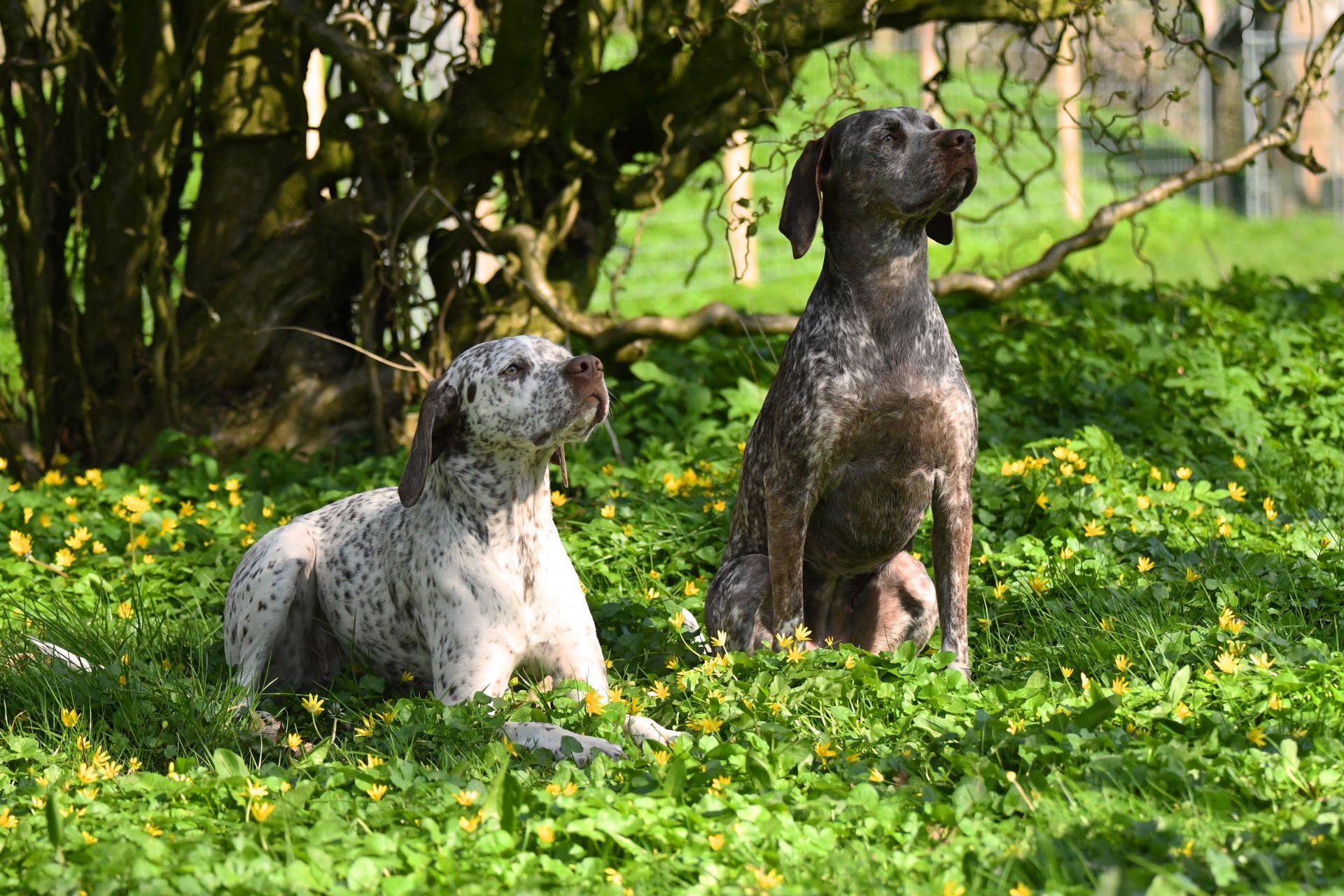Classified as a pointing dog, the Braque du Bourbonnais should be neither too light nor too heavy and the physique should be balanced and muscular. The eyes are rather round, hazel or amber depending on the coat color, with pigment around the eyes and truffle. The expression is expressive, soft and intelligent. The hair is fine and dense, slightly longer on the back, thinner and shorter on the head and ears. Due to the restriction of tail docking you will find more Braque du Bourbonnais with long tails today. In average there are only a few puppies in a litter born with a naturally docked tail or bobtail.
In many countries docking of the tail is only permitted for hunting purposes. The mating of parents who both have a bobtail is prohibited in many countries and Germany. If you have a Braque du Bourbonnais with a bobtail, it must be mated with a long-tailed Braque du Bourbonnais. The leading Breeding Club VBBFL e.V. in Germany writes in the breeding regulations: "Braque du Bourbonnais without a tail is not a breeding goal of the VBBFL e.V.".


























